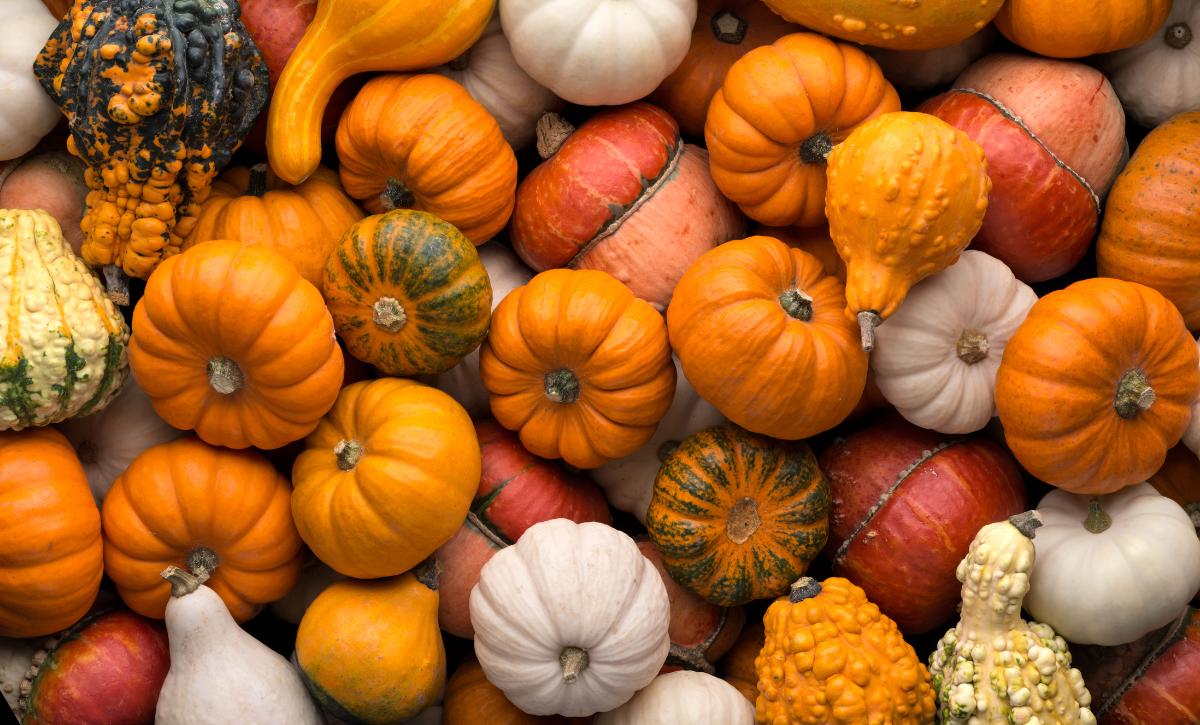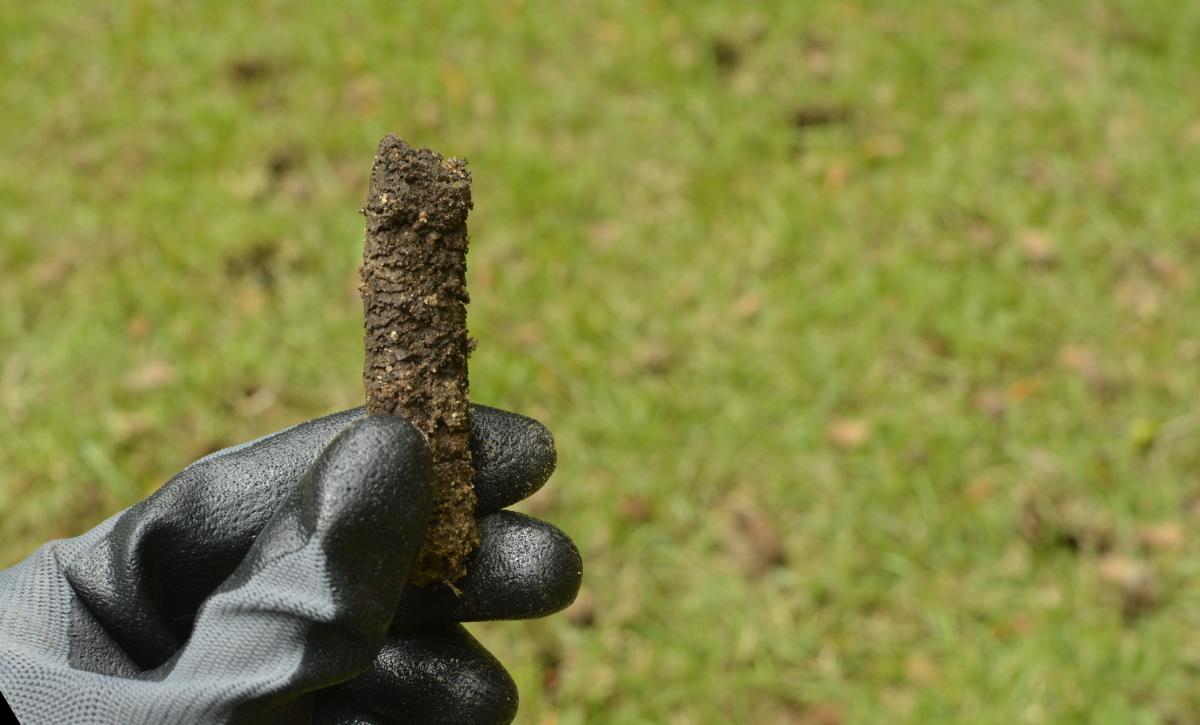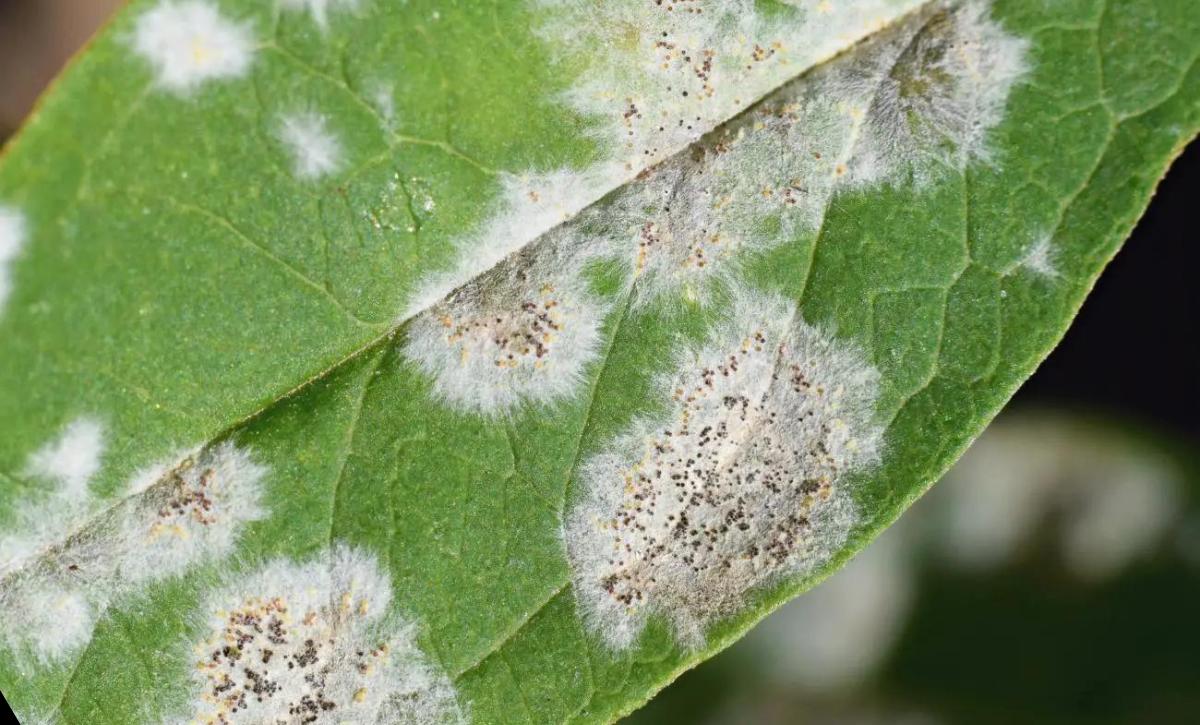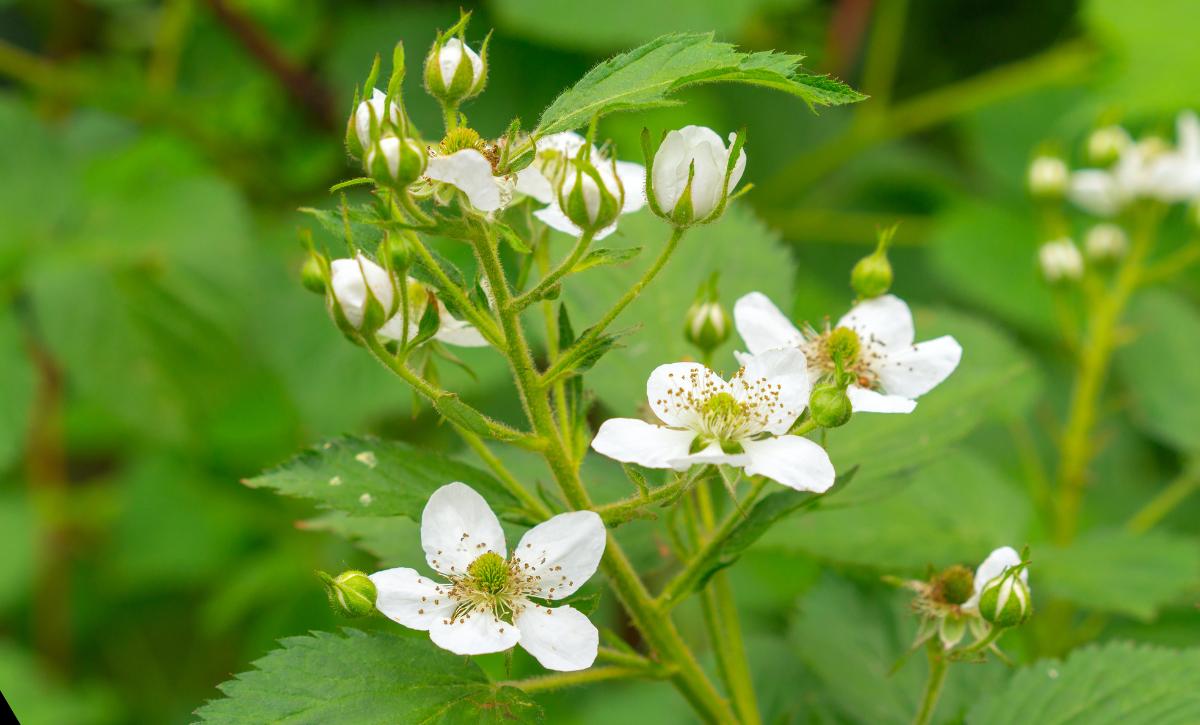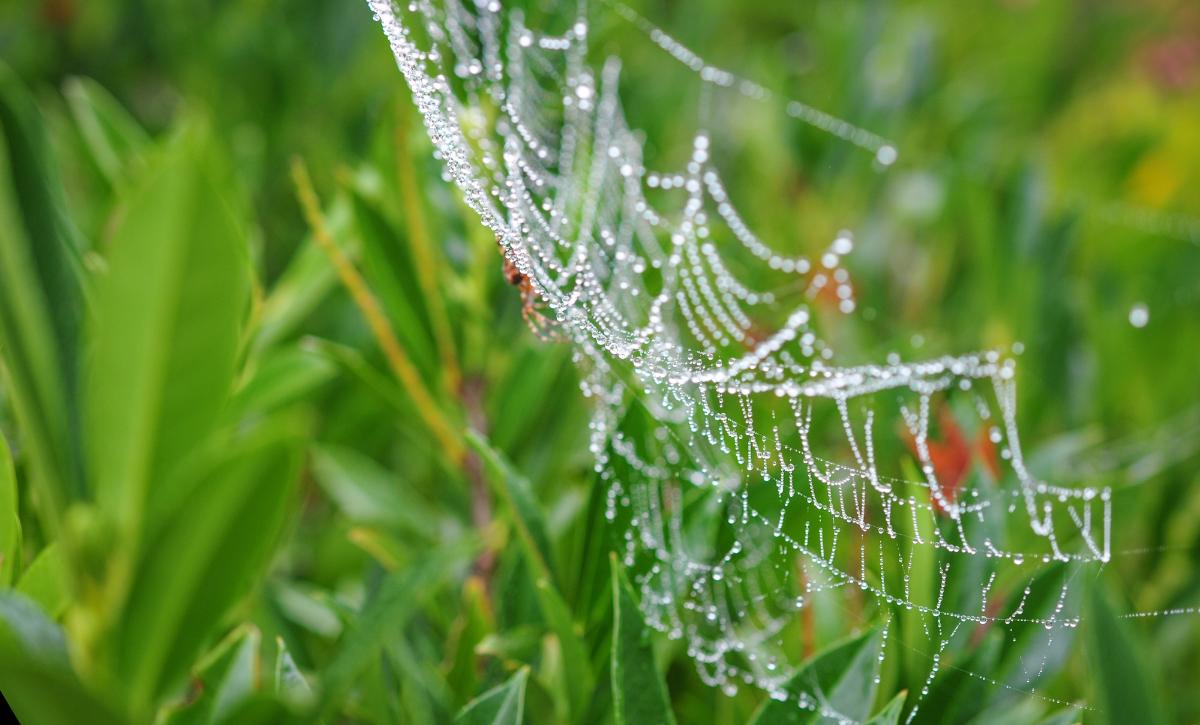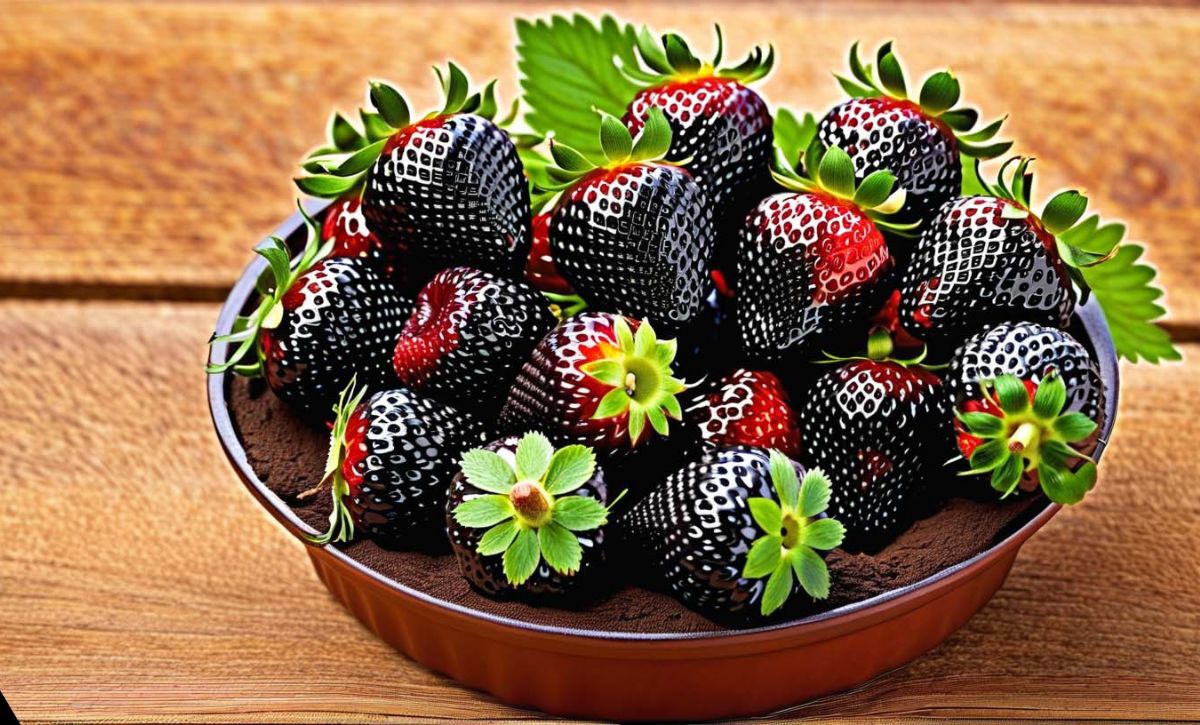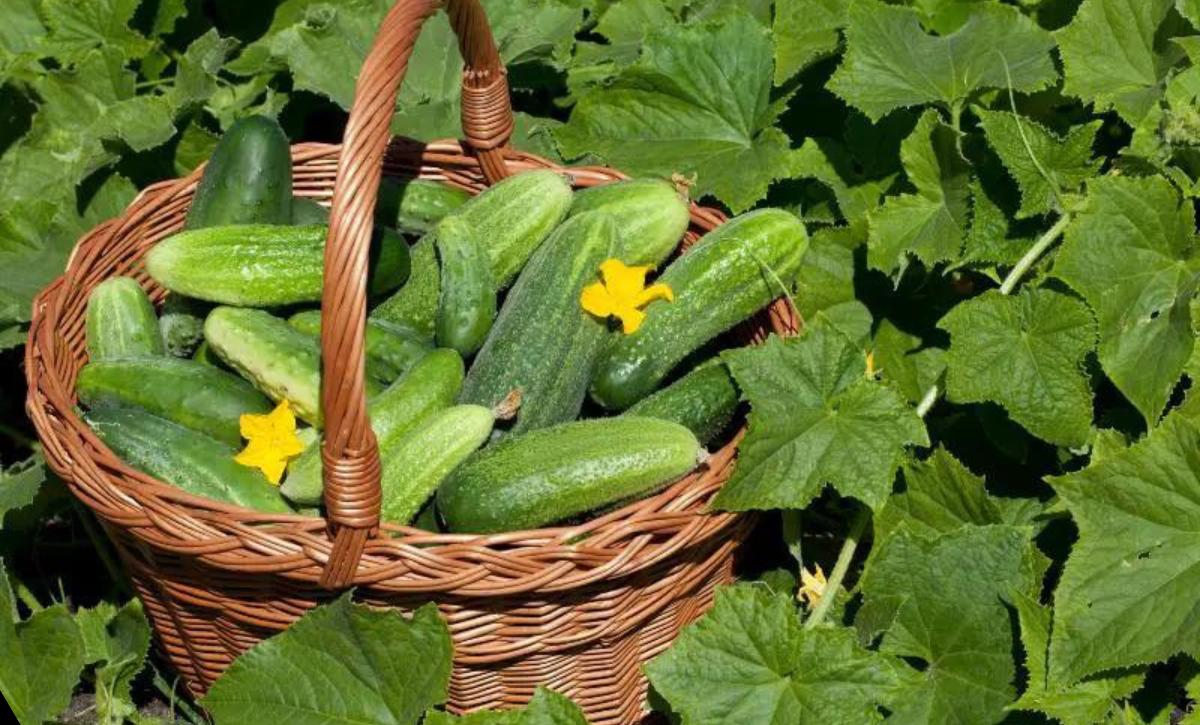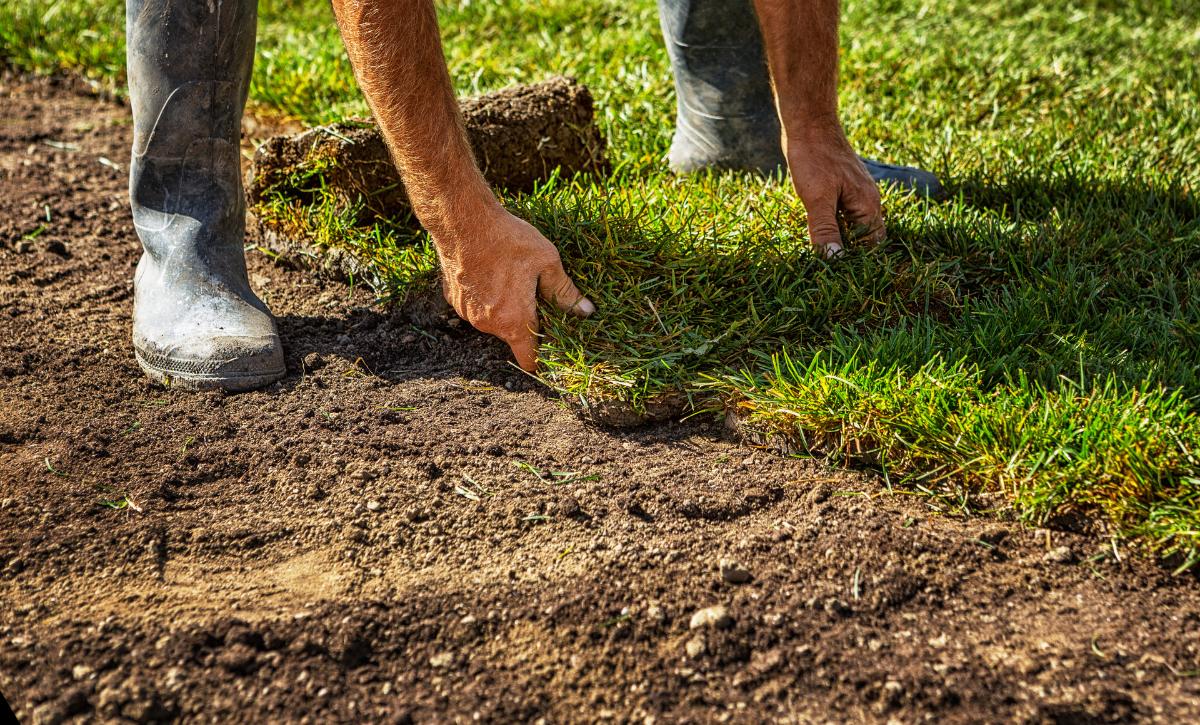Cucumbers are one of the most common fruits (yes, they’re fruits) not only because they make a common ingredient in most healthy salads but also because they have other everyday uses, including being an electrolyte that helps lower blood pressure.
The indispensability of cucumbers makes them common in many fruit gardens, and while they are thought of as long and green, these fruits can come in various shapes, sizes, and colors.
In this article, we’ll discuss all you need to know about the different plant stages of cucumbers, their features, and what to expect at each stage.
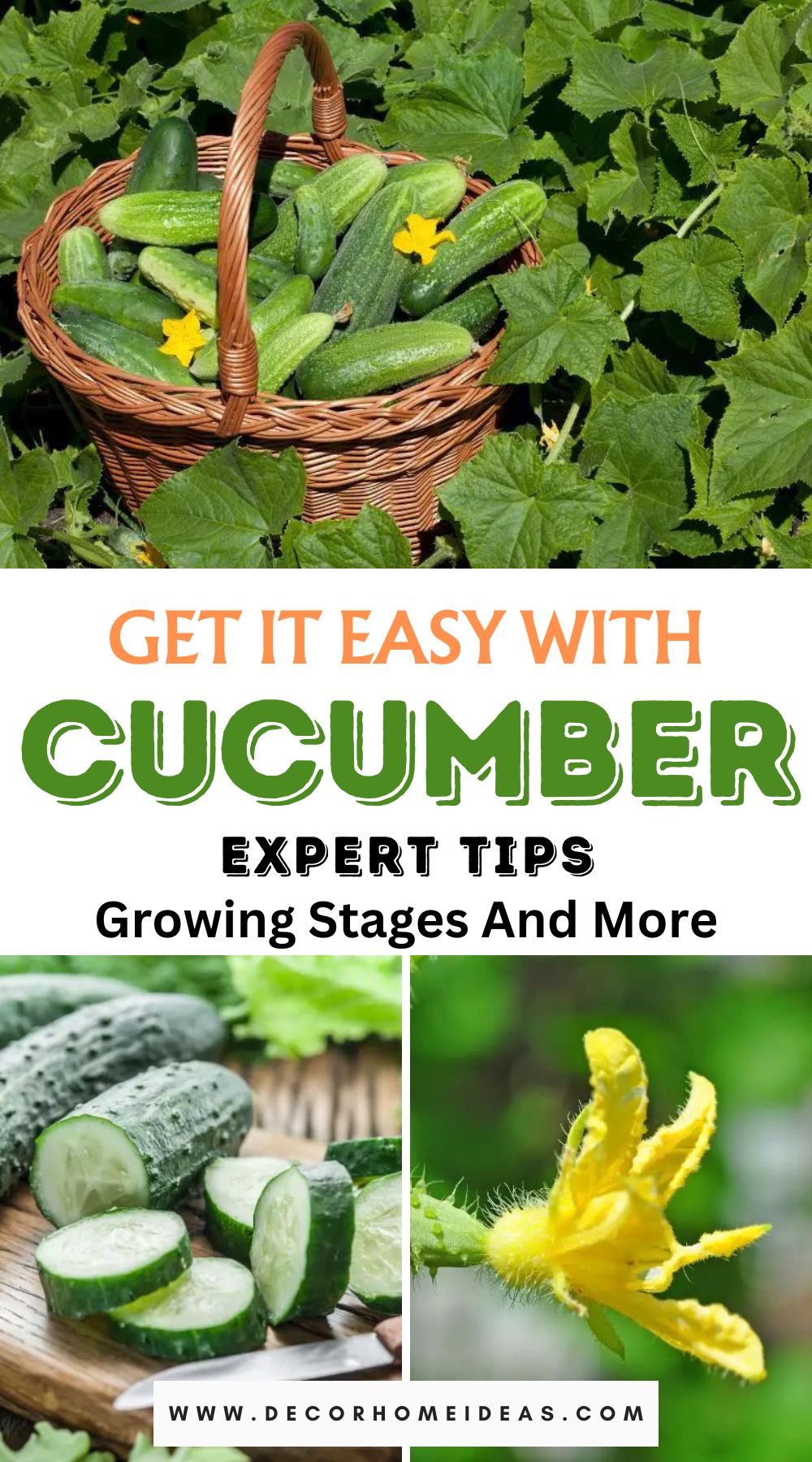
One of the key factors to consider is the growing conditions at each stage, but not to worry, this article will provide all the tips you need to grow these amazing fruits.
Before we get into it, let’s look at some common facts about cucumbers:
| Family: | Cucurbitaceae |
| Genus: | Cucumis |
| Scientific name: | Cucumis sativus |
| Common name: | Cucumber |
| Native habitat: | Asia |
| Plant type: | Annual |
| USDA hardiness zones: | 4-11 |
Cucumber Plant Stages
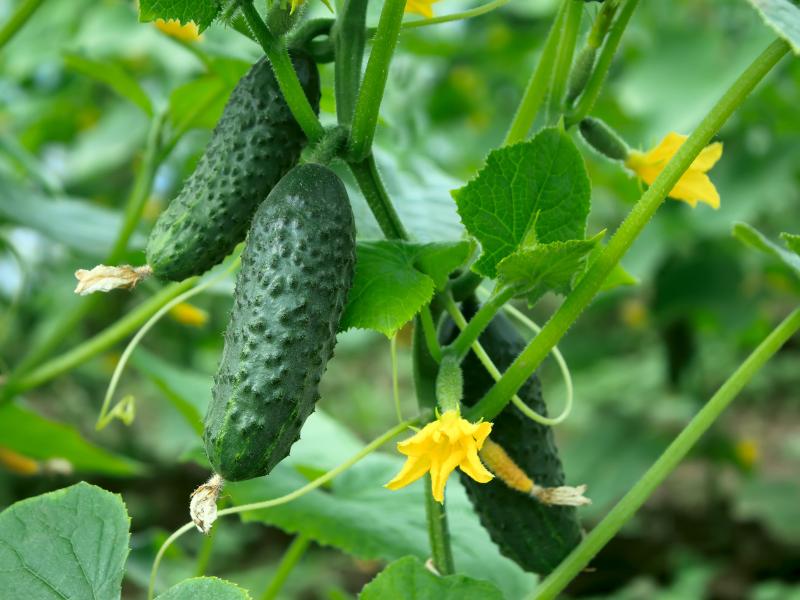
You may be wondering what are plant growth stages? And why is it important to know them? Knowing your cucumber’s plant growth stages is important because it lets you know what to expect at each stage and what your cucumber will look like. This way, if there are any problems or defects with your plant, you can quickly identify them.
The main growing stages for cucumbers include the germination stage, seedling stage, flowering and fruiting stage, and harvesting stage.
Here is what each stage entails:
Germination
Before any growth manifests above the soil, the germination stage must be completed below.
As with many plants, germination is the first growth stage in a cucumber, characterized by the formation of roots below the soil and shoots above. The embryo develops and pierces the outer shell of the seeds, and new growth commences.
The time it takes for the seeds to germinate depends on the soil temperature as well as other factors such as moisture and air. For example, the seeds may take ten days to germinate if the temperature is below 80℉, but only three days if they are above this temperature.
It’s important to take note of the temperatures as the seeds may completely fail to germinate if the temperatures are below 60℉.
Tips for Planting Cucumber Seeds
The first step is choosing the right planting spot. The optimal spot should receive at least 6 hours of direct sunlight. It’s also essential to ensure the soil has an abundance of nutrients.
The seeds shouldn’t be contaminated and should be sown directly from the seed packets.
When planting the seeds, space them about three feet from each other and bury them about an inch below the soil. The spacing should be approximately one foot apart if the cucumber plants are grown as vines.
For people residing in cold climates, using place-row covers is an excellent way to protect your plants.
After germination, the next stage is the seedling stage.
The Seedling Stage
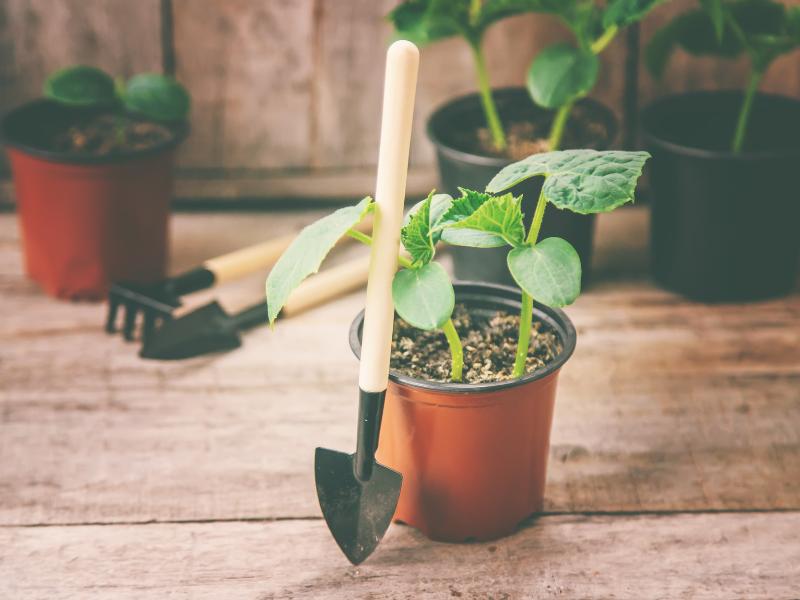
The second stage in the growth cycle of cucumbers is the seedling stage. Here, the newly growing cucumber plants form the first set of leaves known as the cotyledons.
The formation of real leaves follows this, and the plant can start photosynthesizing for nutrition. As more leaves form on the vine, the plant gets stronger, and the vine grows longer.
The vine will require support as it increases in size, so it’s advisable to attach them to a trellis.
Once the vines get to about a foot long, secure them to the trellis or a similar structure using loose ties. Ensure you handle the vines with care so they don’t break.
If the seeds were grown indoors, you’ll need to transplant the seedlings outside after about three weeks since the seeds were planted. You can also watch out for other signs that indicate the seedlings are ready for transplantation, such as the formation of two or more true leaves on the cotyledons. True leaves should be dark in color compared to the cotyledons.
When growing the seedlings indoors, ensure you take them outdoors for a couple of hours so that they are in contact with direct sunlight. This reduces the chances of transplant shock.
Flowering and Fruiting
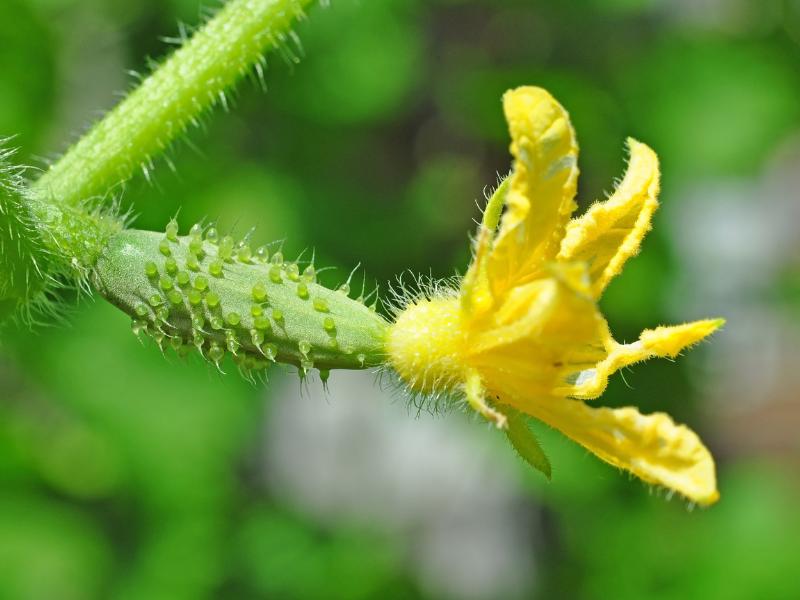
Did you know that cucumbers produce both male and female flowers?
The male flowers are characterized by a sticky tube in the middle covered in pollen. The flowers are the first to form on the cucumber but usually fall off the vine after a few weeks.
Female flowers, on the other hand, blossom after the male flowers. They have a bright yellow color and have a central ovary.
Both flowers play a crucial part in pollination, which is an essential part of the plant’s growth cycle.
Once the plant is pollinated, fruit formation will begin. Successful pollination will be exhibited by the flowers falling off, the female pistil gradually drying and dying, and the fruit’s formation.
To increase the chances of successful pollination, take measures to attract pollinators to your garden by growing host plants.
Alternatively, you can use a paintbrush to fertilize the plant manually by moving pollen from the male flowers to the female organs.
The plant will need more water at this stage due to the fruit formation process. However, ensure the plant isn’t overwatered, as this could lead to the leaves yellowing.
To improve the water retention ability of the plant, mulch the plant around the roots. This will preserve the cool temperatures and reduce the rate of water evaporation.
Harvesting Stage
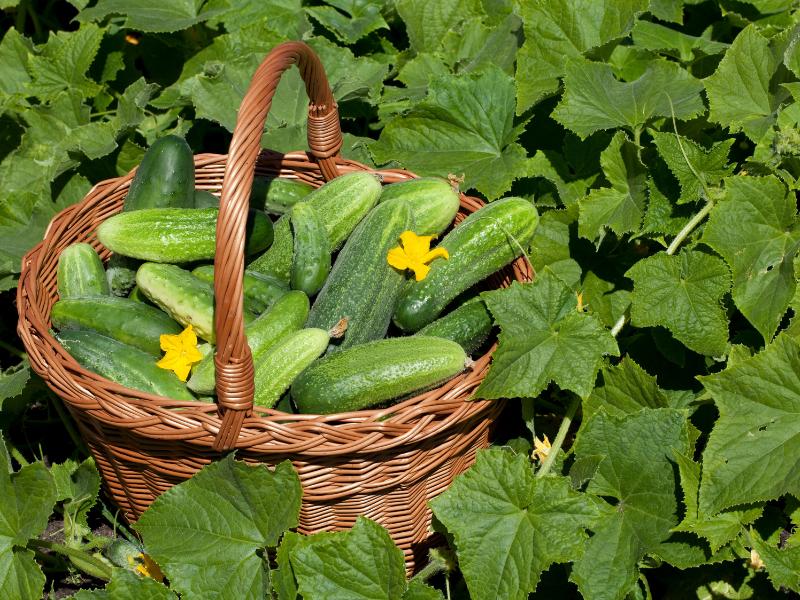
It’s time for all your hard work to bear fruits, literally! Harvesting is the last stage of the cucumber growth cycle. Depending on the cultivar, the maturity period for your cucumbers will vary between 50 to 70 days.
Determining whether the fruits are ready for harvesting may be difficult. The best time to harvest the cucumbers is before they turn yellow. However, this strategy doesn’t apply to natively yellow cucumber fruits.
Cucumbers should be harvested once they have matured and are ready for harvest. Letting them linger for too long will cause the skin to become rough, and they’ll develop a bitter taste. Ripe cucumber fruits are usually light green, while dark green indicates they are overripe.
When harvesting the fruits, snip them from the vines rather than pulling on the vine, as this could damage the plant.
Cucumbers for pickling are ready to be picked at approximately 3 to 4 inches for the common cucumber varieties. The harvesting period for this variety is about 7 to 10 days.
On the other hand, cucumbers for slicing are ready to be harvested when they measure 7 to 8 inches long. This harvesting period will last for about a month or a month and a half.
Best Type of Cucumbers to Grow
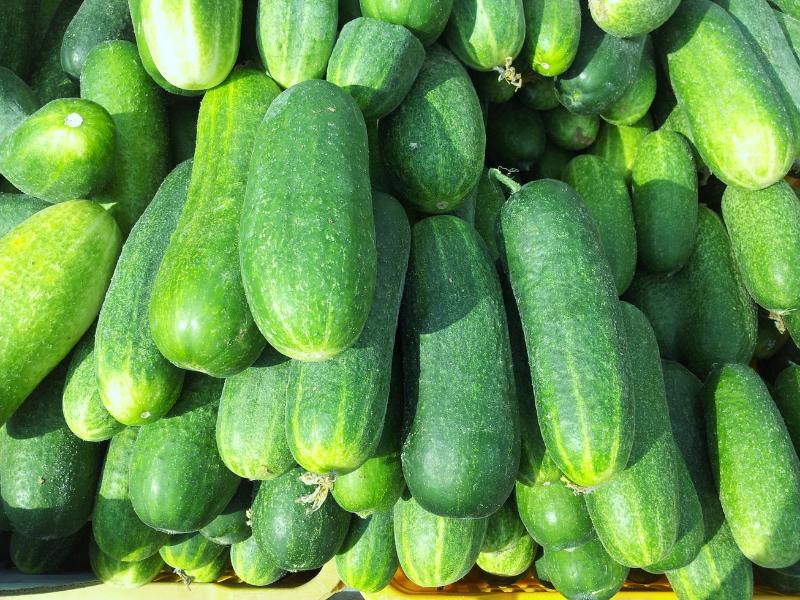
There are two varieties of cucumbers you can choose to grow in your garden: the bush and the vining varieties.
Vining Types
This variety of cucumbers will require a lot of space as the vines grow long. If space isn’t an issue in your garden, opt for this variety.
Common cucumber vining varieties include lemon cucumber and apple crystal cucumbers, considered round cucumber varieties.
Bush Types
These cucumber varieties are the best choice for gardeners with limited space as they don’t take up too much space. They can also be grown in containers.
Common varieties include the Bushel, which makes a good choice for pickling, and the Salad bush, which is a good choice for slicing.
To give your plants optimal conditions, you can grow them in a greenhouse. This ensures you’re in control of the environment and the growing needs of the plants.
Frequently Asked Questions
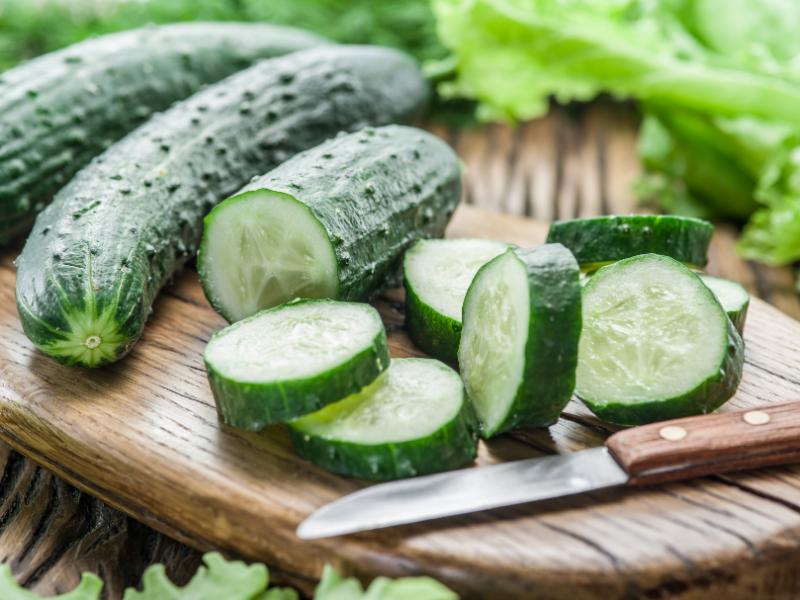
What is the function of a cucumber?
Cucumbers have several health benefits. For one, they are low in calories, so consuming them may help in weight loss, which is why they make a common ingredient in salads. Secondly, they can help lower blood pressure when mixed with water and used as an electrolyte.
Thirdly, they are rich in nutrients and have plenty of antioxidants, which help reduce the risk of cancer and other autoimmune diseases. Cucumbers are also good for hydration since they have a 96% water content.
How much lifespan does a cucumber have?
Cucumbers are annual plants. This means the plant doesn’t continue to grow once it has been harvested. They have a lifespan of approximately 70 days. How long the cucumber will grow after harvest will depend on various factors, such as the weather conditions and the cultivars used.
Summing Up
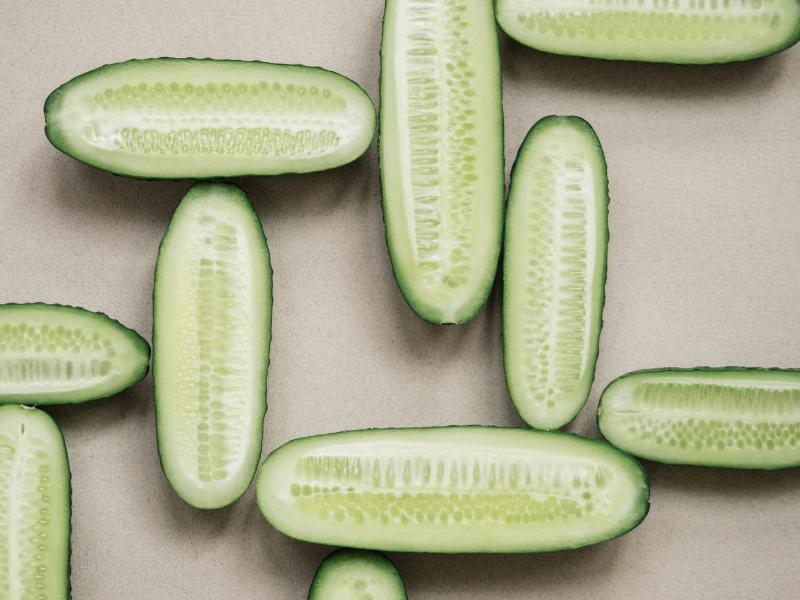
Cucumber is one of the fruits that can help you maintain a healthy lifestyle, and what better way to ensure you have access to these fruits than growing them?
Growing cucumbers and watching them grow through all their stages will give you a newly found appreciation for them.
These growth stages include germination, seedling, flowering, fruiting, and harvesting. It’s vital to ensure your plants are provided with the right growing conditions to increase their yields.
When growing these fruits, research the suitable variety depending on your region and climate. The tips in this article on taking care of the plant at different stages will ensure you have healthy and tasty cucumbers!

